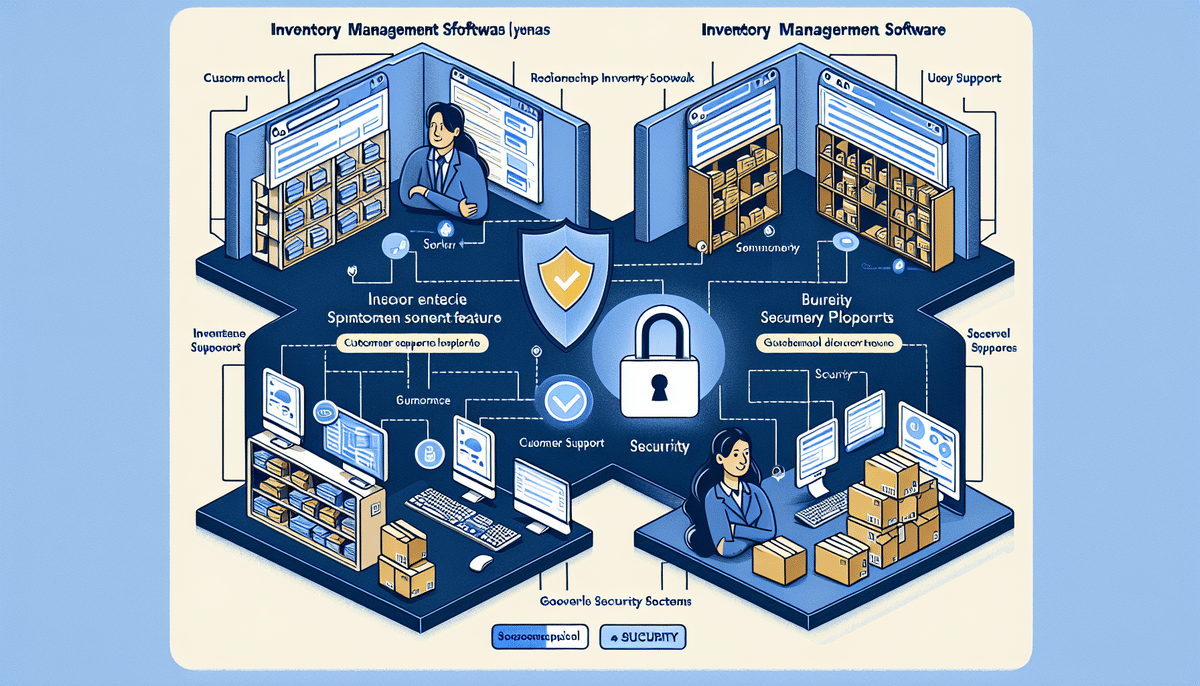Skubana vs Cin7: Comprehensive E-commerce Platform Comparison
As e-commerce continues to expand rapidly, businesses seek efficient solutions to streamline their operations. Two leading platforms in this space are Skubana and Cin7, both designed to enhance inventory, order, and shipping management. This comparison delves into the features, pricing, integrations, and overall performance of Skubana and Cin7 to help you determine which platform best suits your business needs.
Overview of Skubana and Cin7
What is Skubana?
Skubana is an all-in-one e-commerce platform that integrates inventory, order, and shipping management for businesses of varying sizes. By consolidating multiple sales channels and third-party applications, Skubana provides a unified interface for managing operations efficiently. The platform's robust analytics and reporting tools empower businesses with actionable insights, facilitating informed decision-making.
Key Features of Skubana:
- Real-time inventory tracking
- Automated reorder points
- Multi-warehouse support
- Demand forecasting
- Comprehensive warehouse management tools
What is Cin7?
Cin7 is a cloud-based inventory management platform tailored to automate inventory, order, and fulfillment processes. It encompasses a broad spectrum of features aimed at optimizing the supply chain, including B2B and B2C e-commerce integration, advanced warehouse management, and point of sale (POS) functionalities.
Key Features of Cin7:
- Real-time inventory tracking
- Automated stock control
- Customizable workflows
- Integration with various POS systems
- Advanced reporting and analytics
Key Differences Between Skubana and Cin7
While both Skubana and Cin7 offer robust inventory and order management solutions, they differ in several key areas:
- Feature Scope: Skubana provides extensive shipping management and analytics tools, whereas Cin7 emphasizes advanced POS capabilities and broader third-party integrations.
- Pricing Structure: Skubana utilizes a tiered pricing model based on monthly order volume, starting at $499 per month. In contrast, Cin7 offers a traditional subscription model, beginning at $299 per month.
- User Interface: Skubana allows for more customization in dashboards and reports, catering to businesses with specific reporting needs. Cin7 offers a more standardized interface with built-in features tailored for comprehensive functionality.
Feature Comparison: Skubana vs Cin7
Inventory Management
Both platforms excel in inventory management, offering real-time tracking, automated stock control, and demand forecasting. Skubana's integration with multiple sales channels like Amazon and Shopify enables seamless inventory synchronization across platforms, reducing the risk of overselling.
Cin7, on the other hand, supports barcode scanning and integrates with various POS systems, making it ideal for businesses with both online and brick-and-mortar operations. Its ability to manage inventory across multiple locations ensures accuracy and efficiency.
Order Management
Skubana offers automated order routing, customizable workflows, and the ability to split shipments, enhancing order fulfillment efficiency. Its detailed reporting on order performance aids in identifying trends and optimizing processes.
Cin7 provides similar order management features, including tools for handling returns and exchanges. Its integration with shipping carriers simplifies the generation of shipping labels and tracking, ensuring a smooth fulfillment process.
Shipping Management
Skubana stands out with its support for multiple carriers, automated shipping rules, and integration with third-party shipping software like ShipStation and Shippo. These features allow businesses to provide accurate shipping estimates and streamline the shipping process.
Cin7 also supports multiple carriers and offers automated shipping rules, but its primary focus is on optimizing shipping costs and managing inventory across different locations.
Pricing and Integrations
Pricing Comparison
Skubana's tiered pricing starts at $499 per month after a 14-day free trial, making it suitable for mid to large-sized businesses that process a high volume of orders. Cin7's subscription-based pricing begins at $299 per month, offering a more affordable entry point for smaller businesses.
Integrations
Both platforms integrate with a wide range of third-party applications and sales channels. Skubana supports over 50 integrations and offers a robust API for custom connections, while Cin7 integrates with approximately 40 applications, providing extensive connectivity to meet diverse business needs.
Choosing the right platform may depend on the specific integrations required for your business operations.
Customer Support and Reviews
Customer Support Comparison
Skubana provides personalized support with dedicated account managers and a community forum moderated by their staff, fostering a collaborative environment for users. Cin7 offers comprehensive support through email, phone, live chat, and extensive online documentation but lacks a community forum.
Customer Reviews
According to TrustRadius:
- Skubana: Average rating of 9.6 out of 10 based on 14 reviews, praised for its comprehensive features and customization options.
- Cin7: Average rating of 8.3 out of 10 based on 60 reviews, commended for its advanced POS capabilities and integrations.
Both platforms receive positive feedback for ease of use and feature sets, though some users report challenges with customer support and platform performance.
Pros and Cons
Skubana
- Pros:
- Comprehensive feature set
- Highly customizable dashboards and reports
- Robust analytics capabilities
- Cons:
- Higher pricing may be restrictive for smaller businesses
- Occasional reported issues with customer support responsiveness
Cin7
- Pros:
- Advanced POS and inventory management capabilities
- Extensive third-party integrations
- Support for barcode scanning
- Cons:
- Less customizable user interface compared to Skubana
- Some users experience platform performance issues
Conclusion: Which Platform Should You Choose?
The choice between Skubana and Cin7 depends largely on your business's specific requirements and growth objectives. Consider the following factors:
- Skubana: Best suited for businesses needing comprehensive shipping management and advanced analytics. Its customization capabilities make it ideal for companies with specific reporting and operational needs.
- Cin7: Ideal for businesses seeking robust POS functionalities and a more traditional, affordable pricing model. It's particularly beneficial for businesses operating both online and physical stores.
Evaluate your business's unique needs, budget, and desired features to make an informed decision. Taking advantage of free trials offered by both platforms can also provide hands-on experience to determine the best fit for your operations.




















